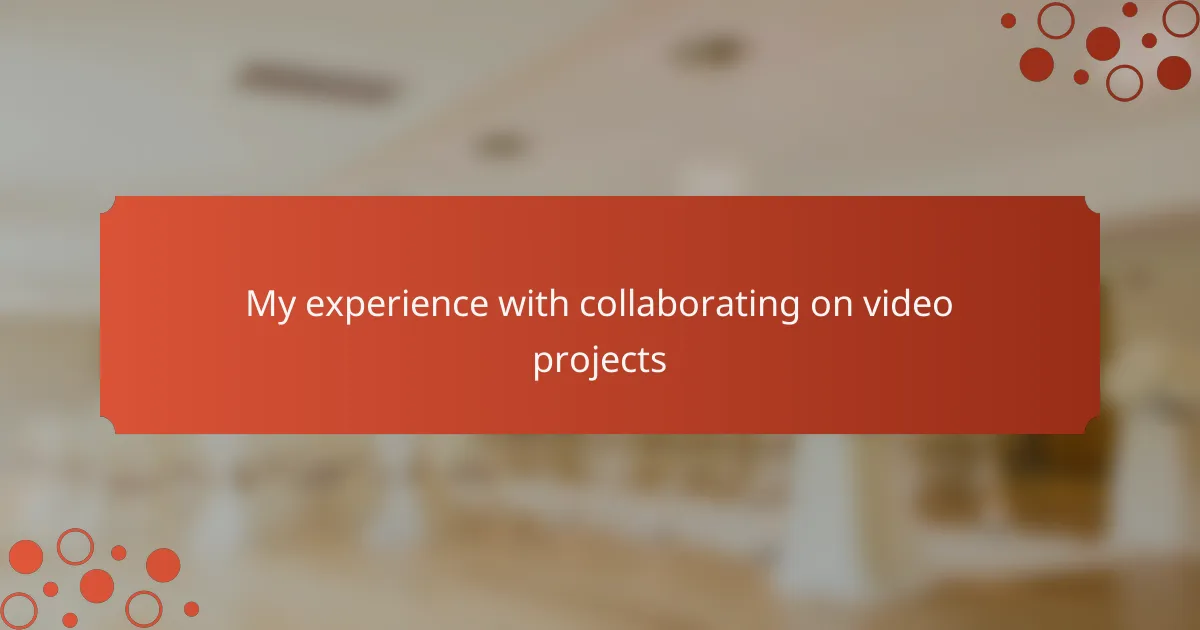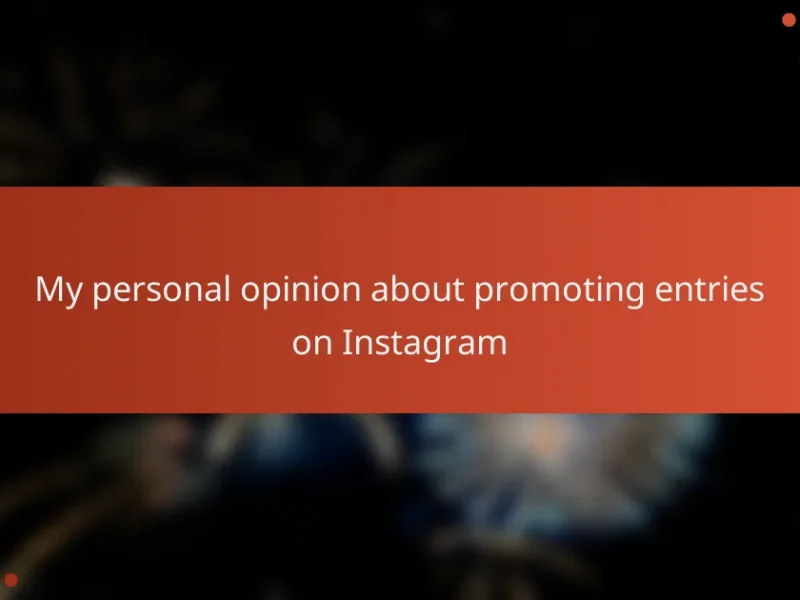Key takeaways
- Video contests encourage creativity and innovation under time constraints while fostering a supportive community among creators.
- Effective communication through regular check-ins, active listening, and shared vocabulary is essential for successful collaboration.
- Flexibility and adaptability in response to team dynamics and unexpected challenges can lead to stronger project outcomes.
- Utilizing cloud-based tools and project management platforms helps streamline workflows and enhance teamwork efficiency.
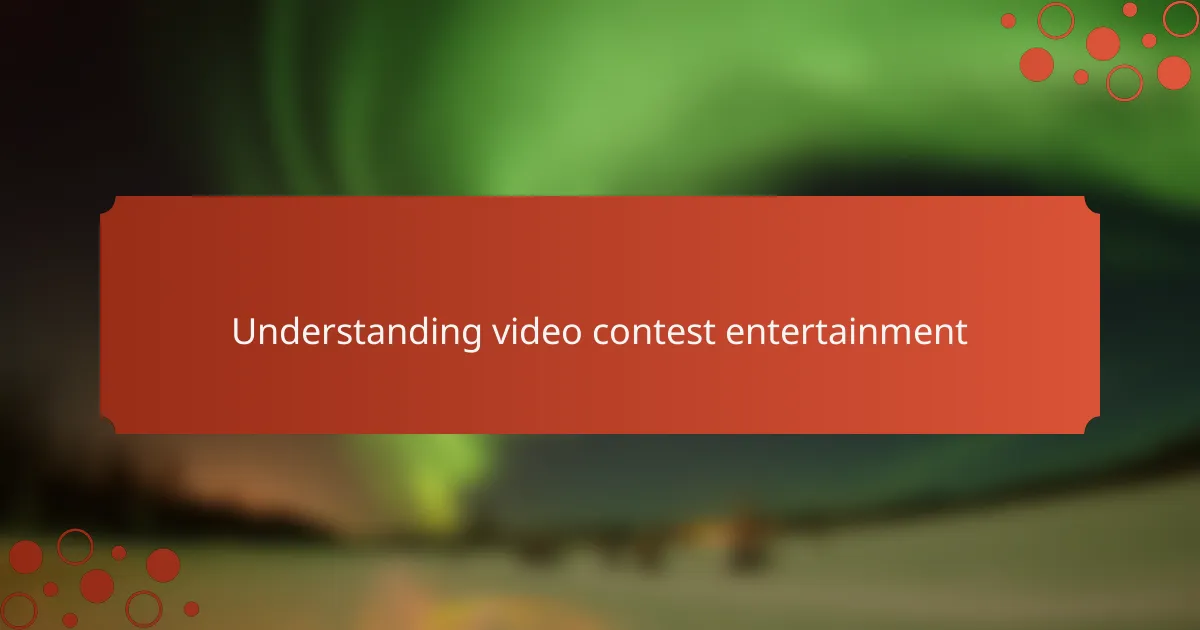
Understanding video contest entertainment
Video contest entertainment has always fascinated me because it blends creativity with competition in such a dynamic way. Have you ever felt that thrill of watching diverse ideas come to life on screen, each video telling a unique story? This balance between artistic expression and the pressure of a contest creates a special kind of energy that’s hard to find elsewhere.
When I first collaborated on a video project for a contest, I noticed how the format pushes participants to innovate within constraints. It made me realize that video contest entertainment isn’t just about winning; it’s about connecting with an audience, sharing perspectives, and sometimes even surprising yourself with what you can create under a deadline. This process can be both exhilarating and nerve-wracking, but always rewarding.
What strikes me the most is how these contests foster a community of creators who inspire and challenge each other. It’s like a shared journey where every entry adds to a larger conversation about storytelling and visual impact. Have you ever been part of such a vibrant creative environment? If so, you know how addictive and motivating it can be.
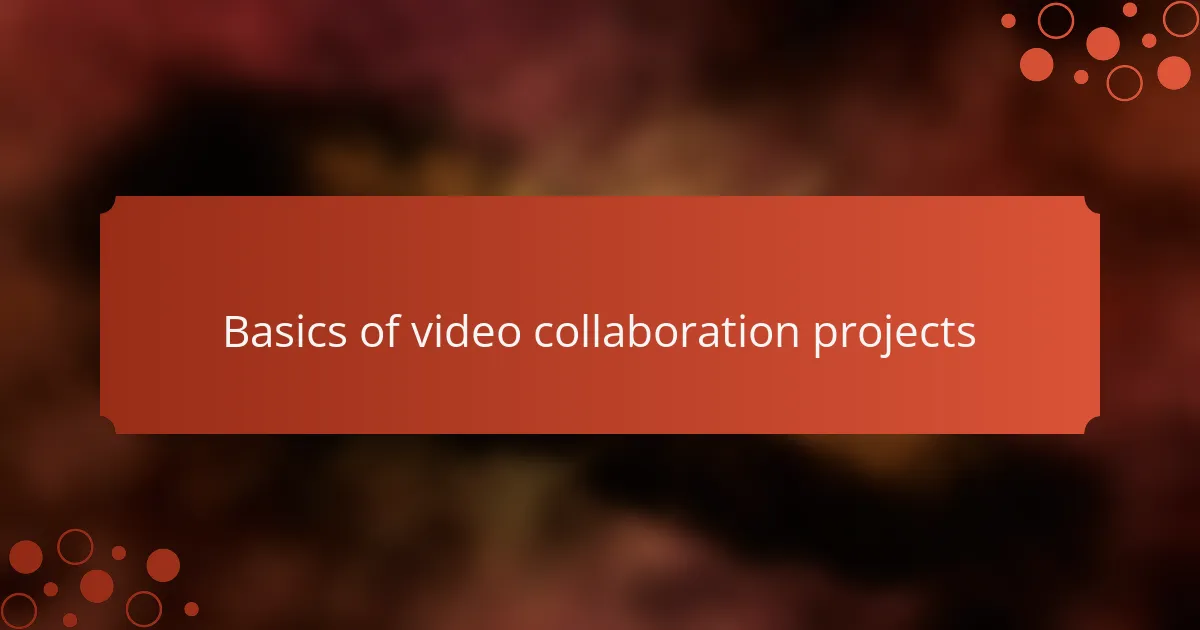
Basics of video collaboration projects
Collaborating on video projects always starts with clear communication—something I quickly learned is non-negotiable. Without this, even the best ideas can get lost in translation, and I’ve had moments where misunderstandings slowed down the whole process. Have you ever been in a group where nobody quite agrees on the vision? That’s why setting common goals early on feels like the secret sauce to smooth teamwork.
I also found that choosing the right tools makes a huge difference. Whether it’s shared editing software or cloud storage, having everyone on the same technical page eliminates a lot of headaches. Sometimes I underestimated this step, and it cost us precious time, especially close to deadlines. Isn’t it surprising how something as simple as a file format or platform familiarity can impact the entire project flow?
Lastly, flexibility plays a bigger role than I initially thought. Video collaboration means you have to be ready to adapt and rethink ideas based on input from others. There have been times when I clung too tightly to my original concept, only to realize that letting go led to a much stronger final product. Have you experienced that moment when compromise doesn’t feel like a loss, but a creative gain? That’s when collaboration truly shines.
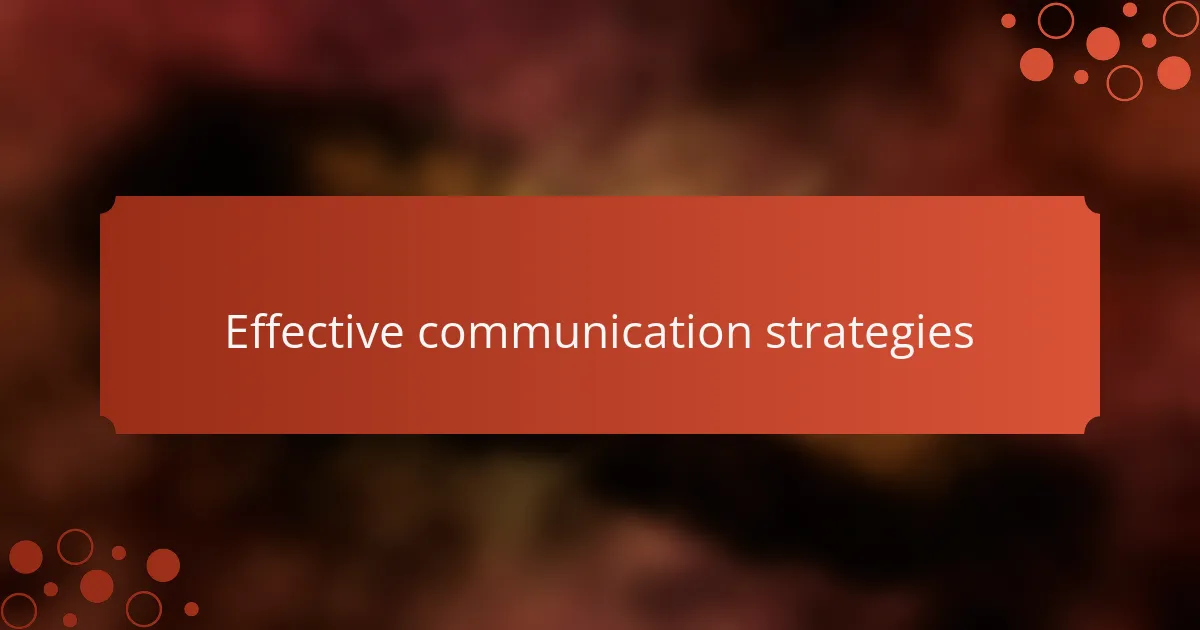
Effective communication strategies
One communication strategy that really shaped my collaboration experience was establishing regular check-ins. I used to think quick messages were enough, but scheduling brief video calls helped us catch misunderstandings before they snowballed. Have you ever had a project where small issues were ignored until they became major roadblocks? Those check-ins saved us from that trap.
I also learned the value of active listening in these projects. Sometimes, I caught myself waiting to speak instead of truly hearing my teammates’ ideas. When I shifted to fully absorbing their input, not only did the creative energy improve, but trust among us deepened. Isn’t it amazing how simply feeling heard can transform a collaboration?
Lastly, choosing clear and consistent terminology became a lifesaver. Early on, we stumbled over vague descriptions that led to confusion about shots or editing styles. Creating a shared vocabulary—like defining what “quick cut” or “establishing shot” meant to all of us—kept everyone aligned. Have you ever tried explaining a concept only to realize you weren’t using the same language? That clarity made all the difference.
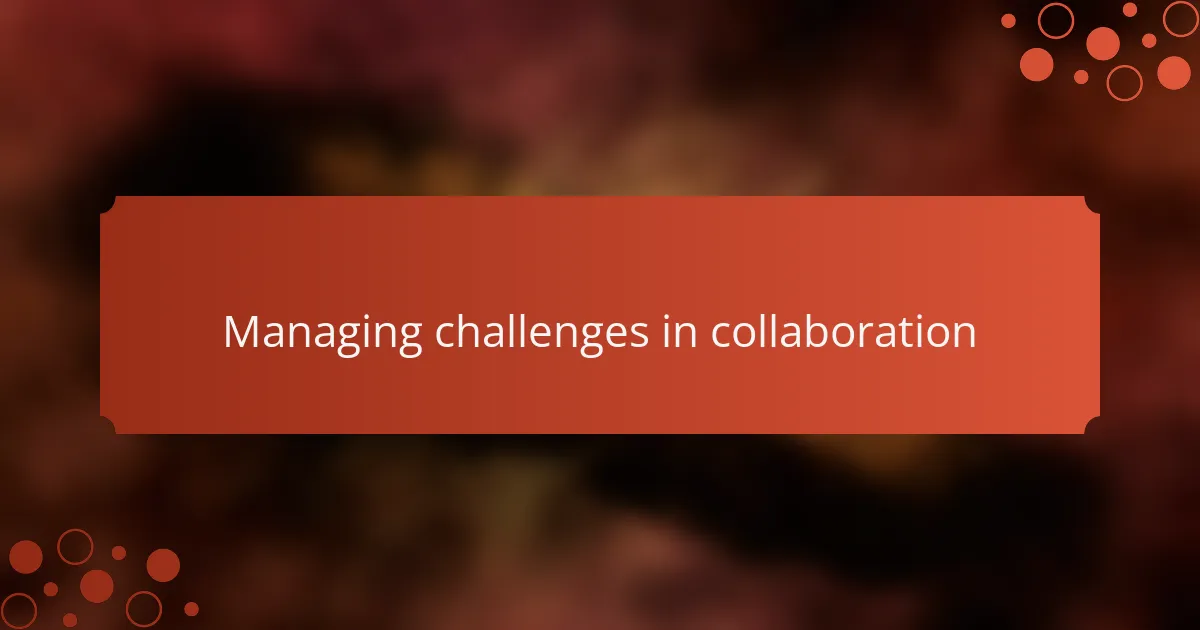
Managing challenges in collaboration
Challenges in collaboration often feel like unexpected storms. I remember a project where conflicting opinions almost derailed our momentum, leaving me frustrated and questioning if we could finish on time. Have you faced moments when team disagreements seemed bigger than the project itself? Navigating these tensions requires patience and a willingness to find common ground, even when it’s uncomfortable.
Another tricky part is balancing different working styles. Some teammates thrive on structure, while others prefer spontaneous creativity. Early on, I underestimated this gap and we ended up with duplicated work and missed deadlines. How often do you find yourself adjusting to someone else’s rhythm? Embracing these differences turns potential conflicts into new strengths if you remain open-minded.
Technical hiccups also tested our resilience more times than I care to admit. From incompatible software versions to lost files, these setbacks felt like roadblocks that sapped our energy. Yet, each challenge pushed us to improve our workflow and communication. Can you relate to that mix of annoyance and determination that drives a team to push through obstacles? Managing challenges isn’t just about fixing problems—it’s about growing together in the process.
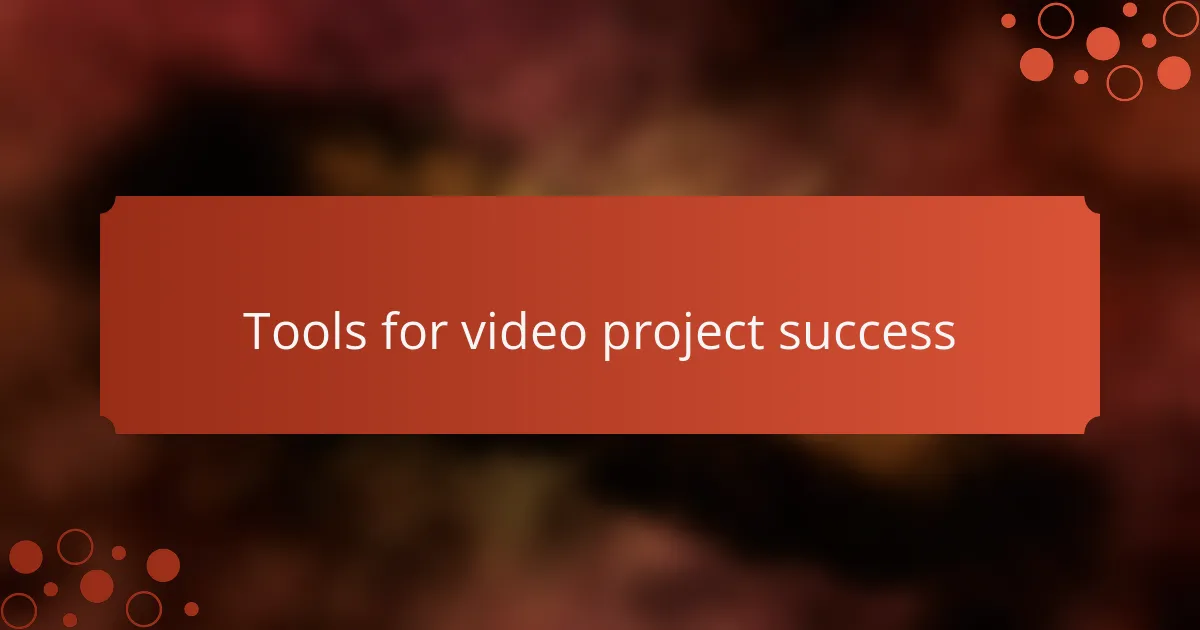
Tools for video project success
One tool that truly transformed my video collaborations was cloud-based editing software. It allowed us to work on the same project simultaneously, no matter where we were. Have you ever experienced the frustration of juggling multiple file versions? Trust me, this kind of tool saves both sanity and time.
Then there’s project management platforms—simple yet powerful. Early in my experience, I overlooked how essential it was to track tasks and deadlines in one place. When we started using these tools, the chaos of missed edits and forgotten feedback simply evaporated. Isn’t it surprising how organizing something as basic as to-do lists can elevate the whole creative process?
Don’t underestimate communication apps specifically designed for teams, either. In one project, direct messaging combined with video calls kept our creative energy alive and flowing smoothly. When conversations were quick and informal, ideas sparked in ways emails never could. Have you noticed how a well-timed chat can clear up confusion faster than any long email chain?
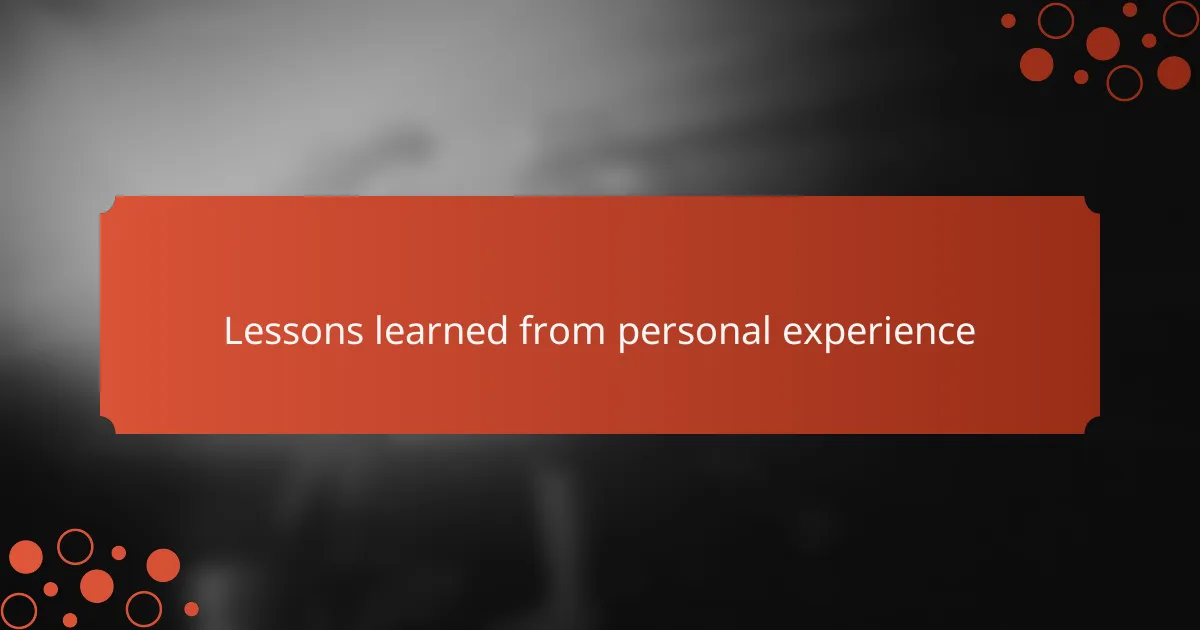
Lessons learned from personal experience
Looking back, I learned that patience is key when collaborating on video projects. Early on, I often expected immediate agreement and quick decisions, but real teamwork takes time as everyone’s ideas mix and evolve. Have you ever felt the frustration of waiting for consensus? That patience really pays off in the quality of the final video.
Another lesson I keep coming back to is the importance of trust. When I first hesitated to delegate parts of the project, I ended up overwhelmed. Letting go and trusting teammates to bring their strengths forward not only lightened my load but also enriched the project in ways I hadn’t anticipated. Isn’t it interesting how collaboration thrives when you actually trust others?
Lastly, I realized that every setback is a chance to learn. Whether it was losing footage or a missed deadline, these moments initially stressed me out. But reflecting on them helped me see the bigger picture and improved how I approach collaboration today. Have you ever turned a mistake into a stepping stone? That’s the kind of growth I now welcome in every project.
